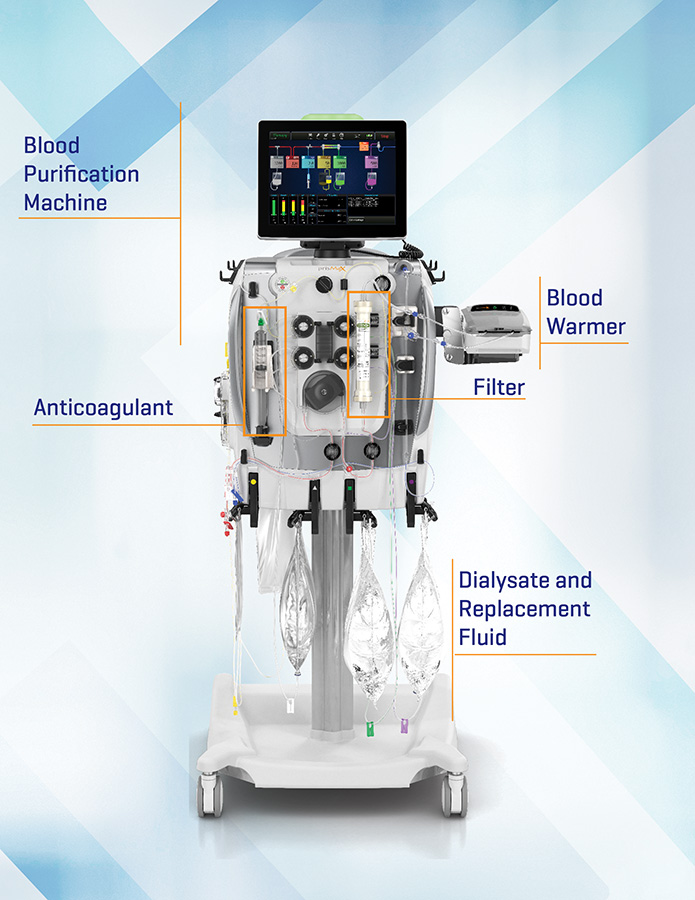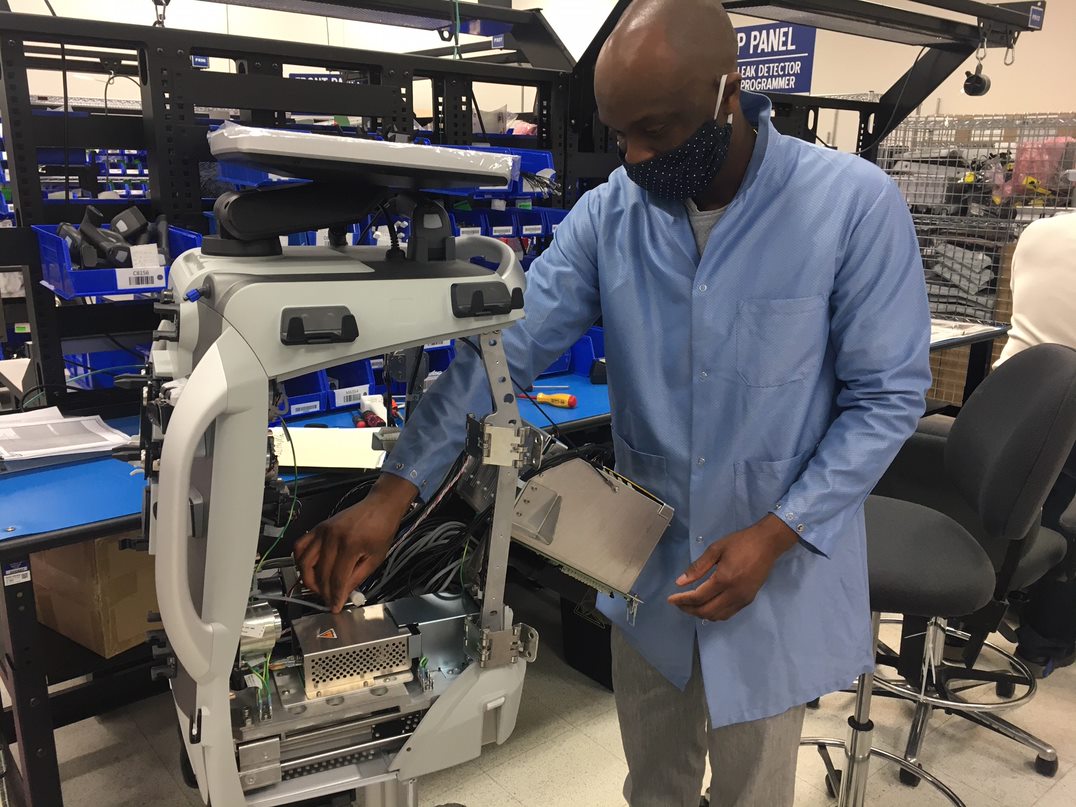Understanding Continuous Renal Replacement Therapy (CRRT) in COVID-19 Management
COVID-19 is affecting patients in many yet-to-be-understood ways. One of its unexpected impacts? Acute kidney injury (AKI), which is sudden kidney failure usually due to infection or trauma. During AKI, the kidneys stop working and fluid and uremic toxins build up in the body.
Initial data reports that approximately 15%-30% of patients with COVID-19 admitted to the ICU are showing signs of kidney failure and in need of continuous renal replacement therapy (CRRT).1
What is CRRT, and how does it help?
CRRT is a type of blood purification therapy used with patients who are experiencing AKI. During this therapy, a patient’s blood passes through a special filter that removes fluid and uremic toxins, returning clean blood to the body. The slow and continuous nature of the process, typically performed over a 24-hour period, allows patients with unstable blood pressure and heart rates, which is termed hemodynamically unstable, to better tolerate this process.

There are six medical products required to perform CRRT on a patient:
- Blood purification machine: the machine pumps the blood, controls the rate of blood flow and includes software to safely monitor therapy delivery
- Dialysate: a fluid that carries toxins away from the filter
- Replacement fluid: a specialized, sterile fluid also used to flush toxins from the body but also to replace electrolytes, other blood elements and volume lost during the filtration process
- Filter: machine component that removes fluid and uremic toxins
- Anticoagulation method: a type of drug that helps the blood flow through the system, lessening the likelihood that the blood will clot in the filter
- Blood warmer: efficiently maintains a patient's blood temperature during blood purification therapy
How does CRRT factor into a patient’s COVID treatment plan?
Dr. Mary Gellens, nephrologist and senior medical director at Baxter, says "we're seeing a subset of patients with COVID-19 become severely ill, with a sepsis-like syndrome and multiorgan failure, including acute kidney injury. In these cases, CRRT may be a life-sustaining and life-saving therapy."

Another serious consideration for COVID-19 patients are reports of increased filter clotting during CRRT. Seriously ill patients with COVID-19 have been reported to suffer from cytokine storm. This is a process where the immune system overreacts to an infectious process and over produces a plethora of infection-fighting substances. These substances can then contribute to clotting of the blood CRRT circuit.
The need for blood purification systems, like Baxter’s leading PrisMax and Prismaflex systems, have increased since the emergence of kidney failure in some COVID patients. To support this increased need and to help hospitals expand the nursing staff who are able to manage CRRT, virtual training resources for healthcare providers have been introduced on renalacute.com.
Does all dialysis work the same for AKI?
Many factors influence the decision on what type of therapy is best for AKI. While some patients may undergo complete recovery, for others, AKI could complicate existing chronic kidney disease (CKD), develop into CKD, or cause irreversible loss of kidney function or end-stage renal disease.2
In this case, chronic dialysis or transplant may be required for survival.
Chronic kidney disease is a lifetime commitment to ongoing therapy that is performed as either hemodialysis (HD), which is done three days a week for four hours a day in a dialysis center, or as peritoneal dialysis (PD), which is performed in patients’ homes while they sleep.
CRRT remains the preferred mode of dialysis therapy for COVID-19 patients with AKI. However, due to the unprecedented demand COVID-19 is putting on healthcare systems, HD and PD exist as alternative dialysis treatments in the ICU.